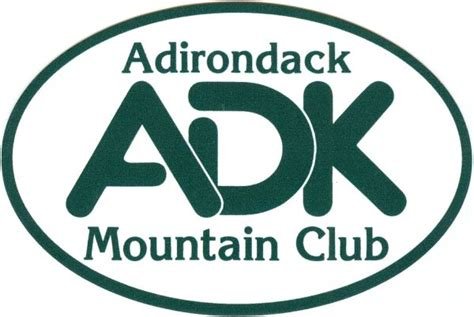
The gas station map kiosk is dead.
We’re what’s next
Making maps that are informative and pretty is hard work and it’s done by real people. It’s not conquistadors and colonists anymore. The Map Center is centering contemporary work from real, live, makers and getting them paid fairly. Keeping a map store alive in the age of Google is hard, and it’s going to take creativity and collaboration.
-

RJ Andrews
-

Evan Applegate
-

Jeffrey Craig
Cincinnati, OH
-

Hannah Dormido
-
Erica Fischer
-

Dr. Candice Luebbering
-

Scott Lussier
-

Amy Martin
-

Dylan Moriarty
-

Tanya O'Brien
-

Neil Parkinson
-

David Ramos
-

Damien Saunder
Victoria, Australia
-

Matthew Dean Shaffer
-

Robert Simmon
San Francisco, CA
-

Rebecca Solnit
San Francisco, CA
-

Anton Thomas
-

Yimiao Wang
Providence, RI
-

Andy Woodruff
Map Center
Spring Semester Interns
Master's Program in Innovation Management and Entrepreneurship Students at Brown University
-

Fangyi Lai
-

Zhe Zhang
-
Ruiqi Zhao
Our Partners
-

ADK
-

Appalachian Mountain Club
-

Decolonial Atlas
-

GeoHipster
-

Green Goat Maps
-

New England Museum Association
-

North American Cartographic Information Society
-

NOAA
-

Open Street Map
-

Purple Lizard
Do you make maps?
I want to get you published. And paid.
Rhode Island is a great state that deserves great maps and there’s a modest but steady demand for quality, attractive cartography that celebrates Southern New England. But if you look around, most of the maps around here are antiques or cartoons. The Map Center doesn’t just want to sell maps- we want to support cartographers making beautiful and accurate stuff today. If you’re a cartographer or even a GIS student looking to improve your skills, send me your print-ready map with an Area of Interest within the North East USA or take up one of the challenges below and the Map Center will publish your work, sell it in the Pawtucket store and get you published and maybe even paid. Here’s how it works:
Make a map. If you can’t think of a good one, read the map challenges below to get inspired. Your technique doesn’t matter as long as it’s accurate and looks good. It should be formatted to be printed on ANSI A-D sized paper.
Send your completed map to info@mapcenter.com as a .png file. The Map Center will review your sample, offer suggestions and help you get it to marketable quality. Your name, any data citations and the date should be legibly on the final product. You retain the intellectual property of your design. It’s yours forever.
Write a brief artists statement that tells us who you are, why you chose the map challenge that you did and how you went about making your map. Include information about data sources, who your audience is and what challenges you faced.
Once your map is approved and we agree on a sales price and printing format, we sign some papers. The Map Center will print your map and display it for sale at our 545 Pawtucket Ave location and at local Rhode Island festivals like WaterFire. It will go on the website and be available for on-demand shipping.
???????
Profit? We will track the sales and send you a check once your cut has cleared $100 or you can cash out after six months.
Lighthouse Map
This map by Edward Rowe Snow is beautiful in cyanotype. There’s plenty of room here for creativity.
Everyone loves a good lighthouse map. There are some interesting old ones of Rhode Island but they haven’t been updated in a long time and most no longer reflect reality. Your challenge is to make this venerable cartographic tradition new and beautiful for nautical home decor. You may find inspiration at the US Lighthouse Society which runs a fun passport program for lighthouses.
Include the location and signal pattern of every light house in Southern New England and don’t forget navigational hazards. This map should probably have a strong nautical accent. You can include Connecticut, Long Island and Massachusetts but just make sure Rhode Island is in the middle. Where it belongs.
Horseshoe Crab Map
Map courtesy of NBEP. There are wonderful datasets out there for depicting the complex bathymetry of Narragansett Bay- this project may test your raster processing skills but make sure you have some creative fun too. Perhaps the work of Eli Nixon will inspire you? Visit the Providence Public Library to find out more.
These ancient organisms have been crawling around the shallow waters of the Narragansett Bay for eons but their future in Rhode Island is worryingly precarious. Celebrate them in all their arthropodal glory with a handsome wall map!
Think about how to show where to see crabs, which beaches they breed on and which habitats are the most important to them. You might want to include eel grass beds, sediment charts, bathymetry and iNaturalist observations. Maybe even some illustrations? This map should be ART but you’re going to have to do some research on what it means to be a horseshoe crab.
Bike Map
Yikes! The DOTRI has a lot on their minds and making a clear, beautiful bike map is not one of them.
The Map Center has bike maps and some of them are very good! Come check them out here! The wonderful problem is that progress is being made in our communities and miles of new protected bike lanes, trails and paths are coming on line which require a constant stream of updates. New bike lanes mean new maps!
Focus on one trail, region or city- a map of the whole state is going to get too cumbersome. Include key landmarks, points of interest and other features that help bikers get to where they want to go as well asf find new places to explore that are bicycle accessible. Include train and bus lines and make sure that you distinguish between paved and unpaved trails. Consider that this map may be folded up and taken with the user, so don’t get too flowery. It should be easy on the eyes but efficient above all else.
Oyster Map
This map is a screenshot from the interactive map of RIDEM. There’s plenty of data here to mix into something delicious.
Oysters are another ancient native species of the Ocean State that are becoming a bigger and even more important part of Rhode Island’s food culture and ecosystem. Where are farmed oysters coming from? Where are the rivers and water flows that support them? Where can you eat oysters harvested from local waters?
River Map
Rhode Island is merely the land that surrounds Narragansett Bay and I want to see a map of the hydrology of the area. Include wetlands, watersheds, rivers, streams. I can imagine there being a cool looking minimalist map or a more fanciful one with illustrations of fish and animal species that call Rhode Island waterways home. Think about including dams or other barriers to navigation- this could end up being a very cool canoe and kayak trail map.
The Historic Mills of the Blackstone Valley
Pawtucket Rhode Island is the birthplace of Industrial America. The first mills and factories were built here powered by the falling waters of the Blackstone River. I imagine a map that shows locations of historic mill buildings along the rivers along with the dams that were built to generate power for the mills. If you are feeling particularly ambitious, you can use a DEM to make a profile graphic that shows where the river drops the most and where the water is most powerful. Think of a whitewater rafting guide but for 18th century textile manufacturing. The National Park Service now has a number of okay maps that show similar things at Slaters Mill and that may be a good place to start.
Great Swamp Press
Great Swamp has been making great maps for decades- we stock them at The Map Center! Unfortunately, they’re no longer being printed and the demand for these lightweight, informative guides isn’t going away. Big River, North South Trail and Arcadia would be good sellers if you make something that is well researched. This job should definitely go to a local.





